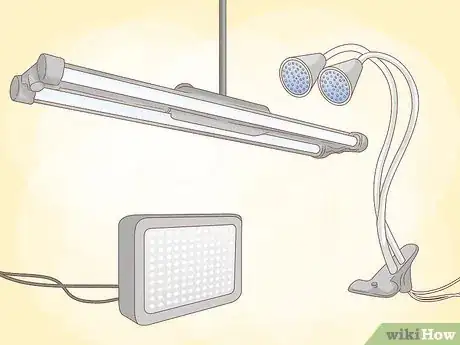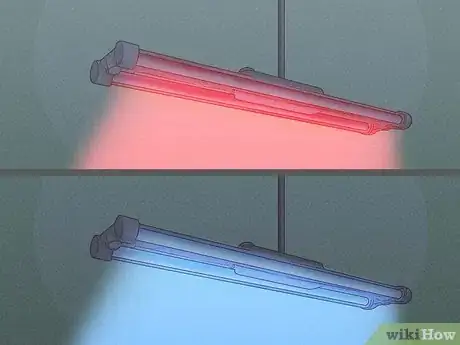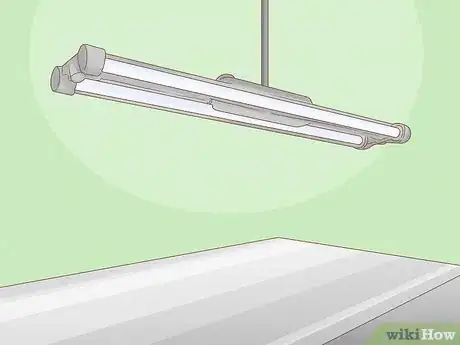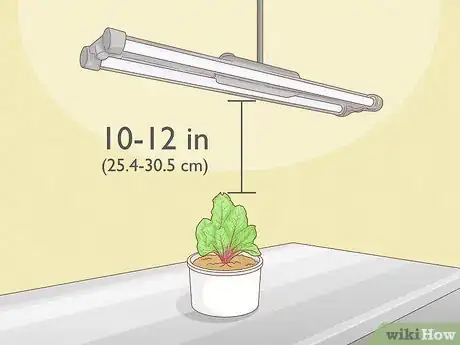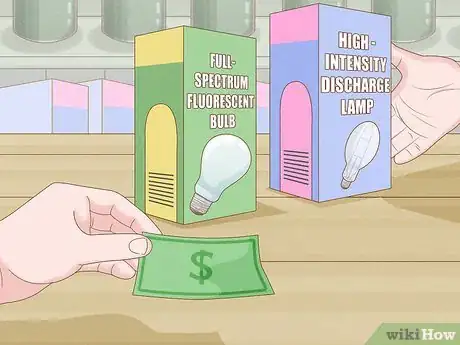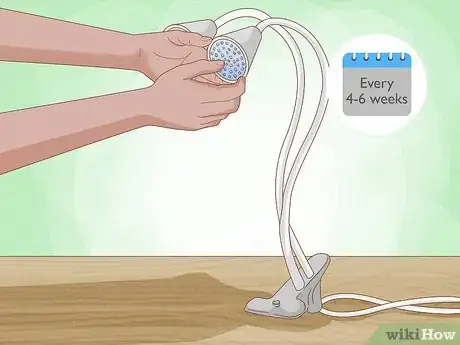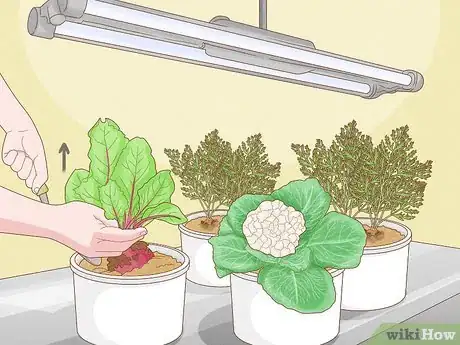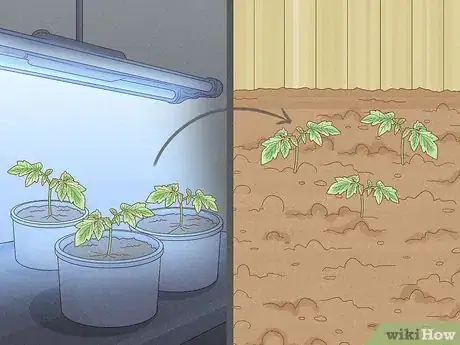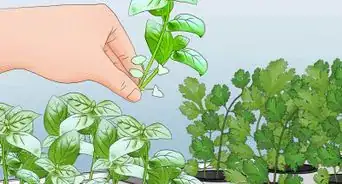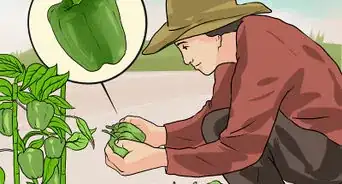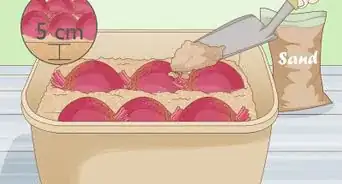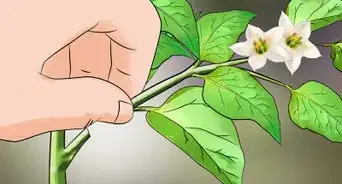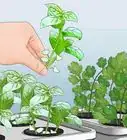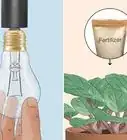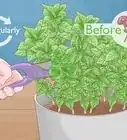X
wikiHow is a “wiki,” similar to Wikipedia, which means that many of our articles are co-written by multiple authors. To create this article, 18 people, some anonymous, worked to edit and improve it over time.
This article has been viewed 112,669 times.
Learn more...
Growing vegetables indoors can be a good idea if you live in a cold climate or you want to start your vegetables before you transplant them outdoors. We'll show you how to choose the right colors, intensity, and duration of light for your home-grown veggies!
Steps
-
1Shop around for grow lights. Look at selections in your local gardening center, or in major retailers such as Home Depot, Lowe's or Sears.
-
2Look for lights that will provide all the colors found in natural sunlight. Photosynthesis requires red and blue light to regulate vegetative growth.Advertisement
-
3Set up your grow lights the same way you would set up a lamp. Position the lights on a solid, even surface above the plants you want to grow.
- Follow any specific set up instructions that come with the model you buy. There should be information in the packaging or on the box.
-
4Make sure the intensity of the light is strong. Vegetable plants do best outdoors in direct sunlight, so you should create a similar environment with your grow lights.
- Keep your vegetable plants no more than 10 to 12 inches (25.4 to 30.5 cm) away from the grow lights.
-
5Give your vegetable plants at least 14 to 18 hours of direct light every day.
- Turn the lights off for 6 to 10 hours every day. Vegetable plants do need a period of darkness to mature and trigger production.
-
6Choose the right bulbs for your vegetable plants.
- Consider full-spectrum fluorescent bulbs. These bulbs will provide warm and cool (red and blue) light which mimics natural solar light. These lights are great to get seedlings started and will provide intense, direct light for your vegetable plants.
- Use high-intensity discharge lamps for energy efficiency and extra intensity. These grow lights are used by commercial growers and emit twice the amount of light for the same amount of energy. They are also more expensive.
-
7Rotate your vegetable plants under the grow lights every week. The light is more intense in the center of the bulb, so it will help your plants grow evenly.
-
8Inspect the bulbs in your grow lights every 4 to 6 weeks.
- Wipe off any dust or dirt that accumulates. Dirty bulbs do not give off as much light as they should.
- Replace fluorescent bulbs that begin to darken on the ends. This means the bulb is aging and not producing as much light as it should.
-
9Harvest your vegetables the way you would with an outdoor garden. Pick them off the plant when they are ready to be eaten.
-
10Transplant your vegetable plants to your outdoor garden when the conditions are good.
- Wait until you have some foliage or flowering on your plants if you began growing them from seeds with grow lights.
Advertisement
Community Q&A
-
QuestionHow deep should the dirt be to grow vegetables indoors?
 Anaka BlackwoodCommunity AnswerStart out with 2-3 inches for the sprouting stage and add more as the plant grows. A plant's roots need plenty of space to spread out and find more water to maintain a healthy plant that can live for a decent time period.
Anaka BlackwoodCommunity AnswerStart out with 2-3 inches for the sprouting stage and add more as the plant grows. A plant's roots need plenty of space to spread out and find more water to maintain a healthy plant that can live for a decent time period. -
QuestionDo I start using grow lights when planting seeds or do I wait until I see some foliage?
 Community AnswerUse them right away; the extra heat from the lights will help your seeds sprout.
Community AnswerUse them right away; the extra heat from the lights will help your seeds sprout. -
QuestionCan I hang my grow lights about 7 feet above the vegetable bed?
 Hi ShangCommunity AnswerThis is just fine, however, your plants might not get sufficient light.
Hi ShangCommunity AnswerThis is just fine, however, your plants might not get sufficient light.
Advertisement
Warnings
- Do not put your vegetable plants too close to the light. While they love direct, intense sunlight, you do not want to burn them. Hold your hand over the foliage. If you feel warmth, the light is probably too close.⧼thumbs_response⧽
Advertisement
Things You'll Need
- Soil
- Water
- A place to plant your plants
- Plants or seedlings
- Grow lights
About This Article
Advertisement
